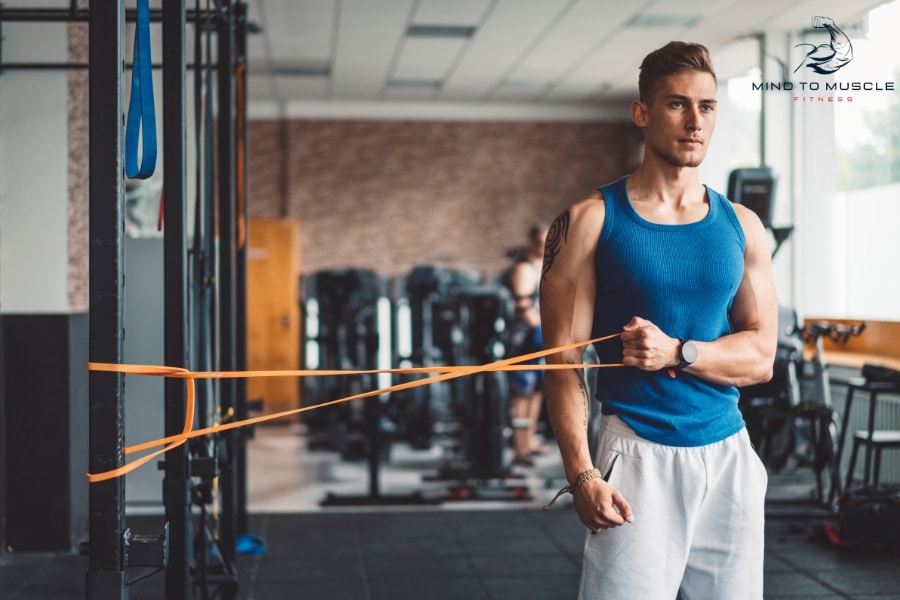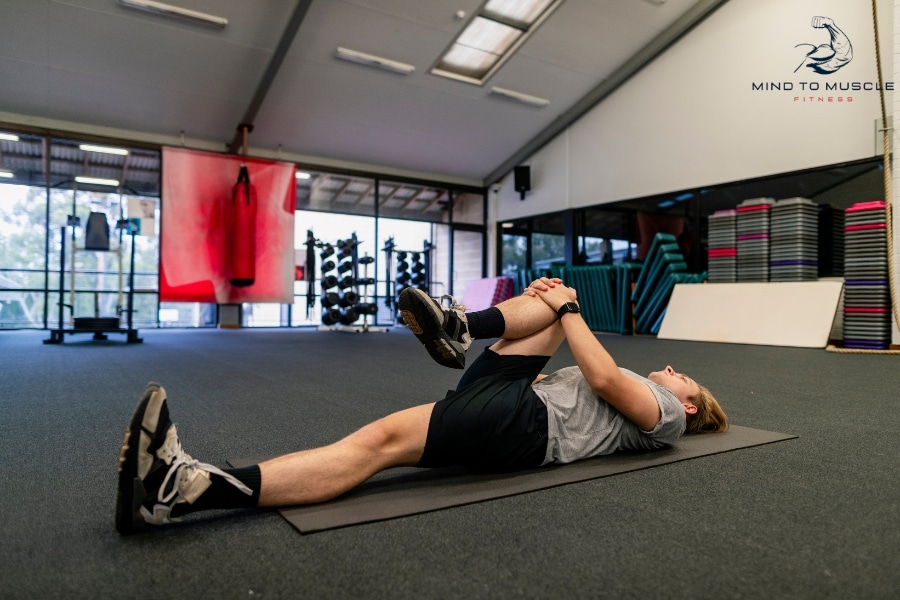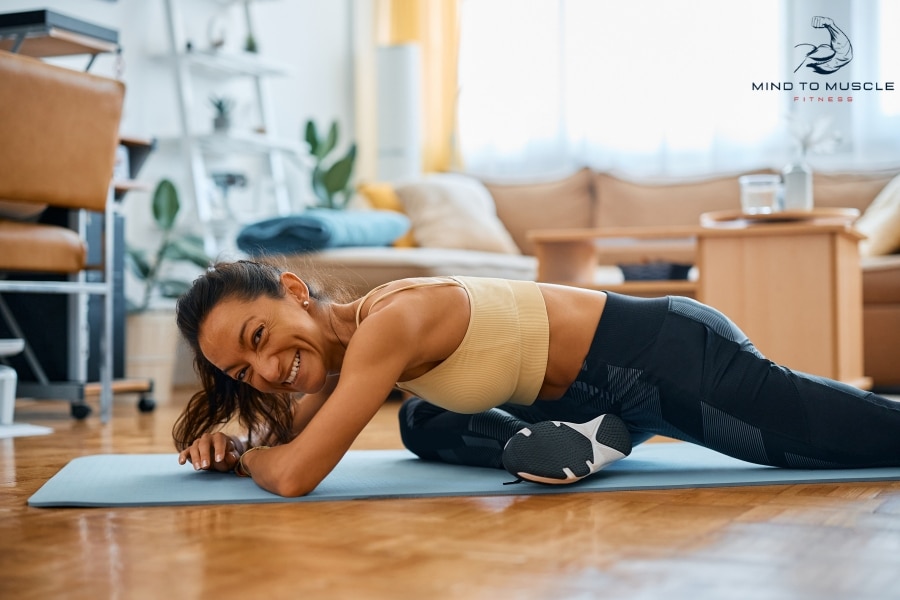
Best CrossFit Mobility Exercises
Improving at CrossFit isn’t just about working hard. It’s also about how well you move. Many CrossFit athletes find the key to better performance in mobility exercises. These are more than just stretching. They’re vital parts of a successful CrossFit routine that improve how you move, avoid injuries, and make every workout count.
Elite CrossFit coaches and athletes clearly show how important mobility exercises are. They use these workouts every day for better performance and to stay injury-free. Mobility isn’t just a small part of CrossFit. It’s key to your success as an athlete.
Key Takeaways
- Mobility exercises play a crucial role in CrossFit for enhancing functional movement.
- Incorporating flexibility training can vastly improve CrossFit performance and prevent injuries.
- Real-life examples from elite CrossFit athletes underscore the importance of mobility routines.
- Effective mobility exercises can help optimize your workout regimen.
- Integrating a well-rounded mobility workout into daily routines is essential for long-term success.
Why Mobility is Essential for CrossFit Athletes
It’s key to realize the importance of mobility in CrossFit. It boosts how well athletes perform and keeps them safe from injuries. Mobility exercises work to improve the movement and flexibility of muscles and joints. Many experts and researchers support these exercises. Doing them helps you move better and perform at your best.
Focusing on mobility helps enhance athletic performance. Studies show that athletes who are more flexible move better and with less effort. Better moving means doing more with less strain. As a result, athletes can go beyond their limits safely.
And, mobility exercises also help in preventing CrossFit injuries. When your body can move freely, it’s better prepared for tough CrossFit activities. This lower the chances of getting hurt, creating a safer environment for training.
| Benefit | Details |
|---|---|
| Improved Range of Motion | Allows for greater movement efficiency and fluidity during exercises. |
| Enhanced Performance | Helps athletes move with better form and less tiredness. |
| Injury Prevention | Makes muscle strains and joint injuries less likely by improving flexibility. |
| Balanced Strength | Makes sure all muscles work well together, preventing some injuries. |
Adding mobility exercises to your workout is crucial. It makes a big difference in your performance and safety. Knowing the importance of mobility in CrossFit is key. It helps you perform better and stay away from injuries for a long time.

Top CrossFit Mobility Exercises for Flexibility
After 18 years as an orthopedic physical therapist, I know mobility is key in CrossFit. It boosts how well you move and your performance. Getting your hips and shoulders flexible is vital for good movement. This affects how you squat, lunge, or do overhead lifts.
Dynamic Stretching Techniques
Dynamic stretching is a must before tough CrossFit routines. It boosts how far you can move and your efficiency. A 15-minute routine each day can really improve your game. Here’s what you should do:
- Frog Stretch: Opens up your hip for deep squats.
- Pigeon Stretch: Loosens up your hips, great for lunges.
- Lunge Rotations with Kneeling Hamstring Stretch: Better flexibility and balance.
- Foot Circles with Toes Flexed: Gets your ankles ready for all directions.
- Calf Raises: Makes your ankles more mobile for big jumps.
Joint Mobility Drills
Drills to keep your joints flexible are vital. They help avoid pain and let you move well in CrossFit. Try these for better movement:
- Backward Facing Wrist Flexor Stretch: More wrist flexibility for lifting overhead.
- Quadruped Shoulder Circles: Increases shoulder movement, good for squats.
- Tall Kneeling Arm Raises: Helps your back move better, for good posture.
- Clasped Hands Extension: Stretches your chest and shoulders for pulling stuff.
Functional Movement Patterns
The way we move in CrossFit is based on everyday actions. It makes us better at real-life movement and reduces injury risk. Training with functional movements improves your CrossFit game and performance.
- Squats: They strengthen your legs and make them flexible.
- Lunges: Good for balance, stability, and leg strength.
- Overhead Barbell Squat: Shows how important mobility and strength are together.
Using Mobility Tools and Equipment
Mobility tools and equipment are key for a good CrossFit routine. They help a lot. You can use foam rolling, resistance bands, and massage balls. Each one does something special. They make you better and keep you from getting hurt.
Foam Rolling
Foam rolling is a big deal for CrossFit athletes. It improves your muscles and helps you recover faster. You can work on your back, hips, and more. This makes you more flexible and less tight.
Rolling important muscles like your quads and upper back helps your shoulder move better. Good shoulder movement is key to some CrossFit exercises.
Resistance Bands
Resistance bands are very useful. They can make your muscles stronger and your joints move better. You can do lots of exercises with them. These include shoulder moves and hip stretches.
These exercises are important for lots of CrossFit activities. For example, they help with cleans and pistol squats.
Massage Balls
Massage balls do very precise work on tight muscles. They are good for stress relief. They help with trigger point therapy to relax your muscles.
Use them on your lower back, shoulders, and calves. This even helps move better. It’s important for exercises that use your legs a lot. Using massage balls can make your routine better and help you feel good.
| Mobility Tool | Primary Benefit | Targeted Area |
|---|---|---|
| Foam Rolling | Myofascial release, recovery techniques | Thoracic spine, hips, lower back |
| Resistance Bands | Strengthening exercises, muscle activation | Shoulders, hips, joints |
| Massage Balls | Stress relief techniques, trigger point therapy | Lower back, shoulders, calves |
CrossFit Recovery Exercises
Good recovery exercises in CrossFit are key to staying on top form and avoiding injuries. Active recovery is all about keeping the blood flowing. It eases muscle tightness and soreness. Things like easy walks or soft yoga really help muscles heal and get ready for more hard work.
A proper cool down is just as important. It’s about stretching to stop lactic acid from building up. And doing things like breathing deep to calm our heart rate. This way, we’re ready to take on the next CrossFit challenge at our best.
Let’s run through some useful CrossFit recovery exercises:
- Light cardio (e.g., brisk walking)
- Static stretching of key muscle groups
- Foam rolling for myofascial release
- Gentle yoga sessions
- Hydration and proper nutrition
These exercises encourage active recovery. They are big helps in improving how we perform and stay in CrossFit for the long haul. By fitting these into our daily routines, we can recover better. This, in turn, lets us approach our next workout with more energy and less pain.

Conclusion
Our look into CrossFit mobility exercises shows us something important. A well-structured mobility workout plan is crucial for better CrossFit performance. It helps avoid injuries and make you more flexible. These benefits are not just for now but for a long time.
It’s vital to include mobility drills, functional movements, and recovery in your plan. Doing so keeps your training going strong. It also helps you stay in the sport for longer. Using tools like foam rollers and resistance bands is a smart move. They help your muscles and joints stay at their best.
To wrap up, including regular mobility workouts is key for top CrossFit performance. It also means less chance of getting hurt and a more steady journey in the sport. Always remember, getting better at flexibility and strength takes ongoing effort. Making these exercises a main part of your CrossFit is crucial.
FAQ
What are the best CrossFit mobility exercises?
The top CrossFit movements for mobility are dynamic stretches, joint mobility exercises, and functional movements. They boost flexibility, range of motion, and how well you move. For CrossFit athletes, these are key.
Why is mobility so important for CrossFit athletes?
Mobility makes a big difference in CrossFit by improving your game, keeping you safe, and perfecting moves. Adding mobility work helps you move better and makes your workouts smoother.
Can dynamic stretching improve my CrossFit performance?
Absolutely, dynamic stretching is a game-changer for CrossFit. It ups your flexibility and gets your body ready for tough tasks. This kind of stretching makes your body move better and feel smoother.
How do joint mobility drills benefit CrossFit training?
Joint mobility drills are a must for CrossFit. They make your joints more flexible and functional. This helps prevent injuries and lets you do hard CrossFit moves by making sure your joints are ready for any motion.
What role do foam rolling exercises play in CrossFit recovery?
Foam rolling is key for recovering after CrossFit. It releases muscle tension and cuts down on soreness. By easing tight muscles and improving blood flow, it readies you for your next tough session.
How can resistance bands improve my mobility routine?
Resistance bands do wonders for your mobility workout. They offer varying resistance in exercises, which builds strength and activates muscles. You can use them for stretches, strength work, and to get more steady through different motions.
Are massage balls useful for stress relief and muscle recovery?
Massage balls really help with stress and muscle healing. They’re great for working out tight spots and calming muscles. Include them in your routine to feel more relaxed and heal faster.
What are some effective CrossFit recovery exercises?
Great recovery exercises for CrossFit are light jogging, yoga, and stretching. Also, don’t skip static stretches and foam rolling. They cut down on muscle pain, boost flexibility, and get you ready for more.



